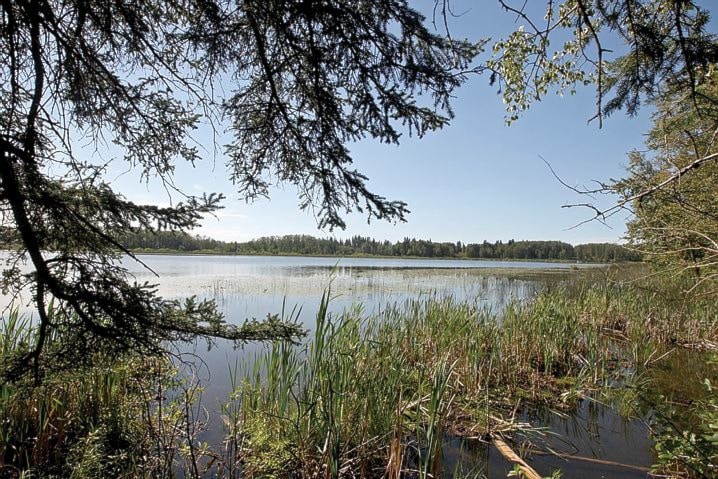Water monitoring will continue on Lacombe Lake, after five years of study has found that bacteria and nutrient levels remain high in the lake three km north of the city.
Testing of the lake began in 2008 when pressure from lakeshore residents convinced Lacombe County to establish a monitoring program.
Residents suspected that water being diverted into the lake from Whelp Creek was contributing bacteria and excess nutrients to the water body, and so the creek diversion — in place since the 1960s to control stream flow during periods of high water levels — was closed off for the 2008-12 testing period.
The findings from the testing period showed that nitrogen levels in the lake exhibited a decreasing trend over the five years, suggesting the creek had been a significant source of nitrogen to the lake. However, bacteria and phosphorous levels did not significantly decrease.
While the county will continue to prevent Whelp Creek from flowing into the lake, it will no longer organize the lake monitoring program.
That task will fall to the Lacombe Lake Stewardship Society, created in 2012.
The group is now tasked with creating an action plan for water quality monitoring and improvement for the lake. Cliff Soper, a member of the group and a county councillor, said that plan will likely include expanding the monitoring it does of the lake and its surroundings.
“One of the things we would like to do is do an analysis of what’s in the watershed — plants, animals, what activities take place — and that’s a fairly expensive proposition.
“We need an analysis. We’re not sure what’s going on in the watershed,” said Soper.
To help fund any future studies, Soper said the group would likely need to obtain charitable status, so the donors who have expressed interest in funding the group could get tax receipts.
However, he said the group is not yet sure if it would even qualify for such a designation.
The stewardship society should be able to get funding through the county’s environmental improvement grant starting in 2014, after county council agreed to implement the grant program on a three-year trial basis at its meeting on Thursday.
The grant will offer $10,000 per year to local groups engaging in environmental initiatives.
The report findings show high coliform and fecal coliform bacteria levels and phosphorous concentrations, levels that remained similar to the period before the diversion was closed.
This suggests, according to the report, that runoff from agricultural land in the watershed is the main contributing factor to those levels in the lake.
Keith Boras, the county’s manager of environmental services, said the lake is not particularly unhealthy, but water quality will always fluctuate in Alberta, with temperature and precipitation large factors.
The last few years having been rather wet would have increased runoff from agricultural lands into the lake.
Last year, the stewardship society investigated trimming some of the rapid plant growth that occurs in the lake and can affect its health and the safety of recreational lake users.
It obtained a permit to do plant stripping work, but found that the work was cost-prohibitive for the fledgling group.
Soper said another goal of the group is to improve fish life and diversity in the lake.
mfish@www.reddeeradvocate.com
